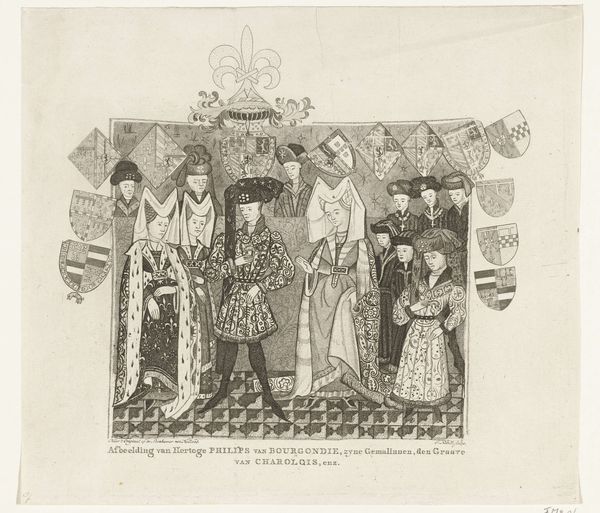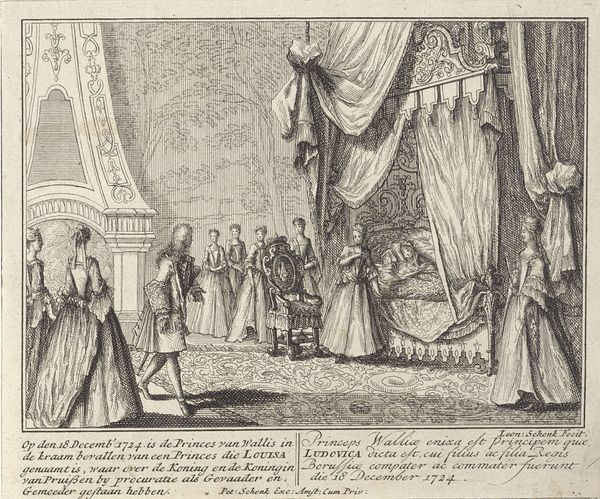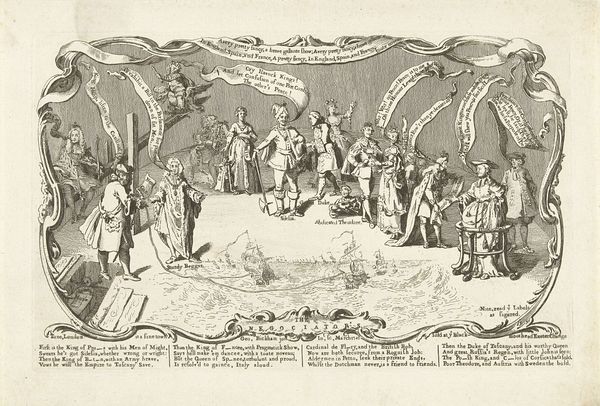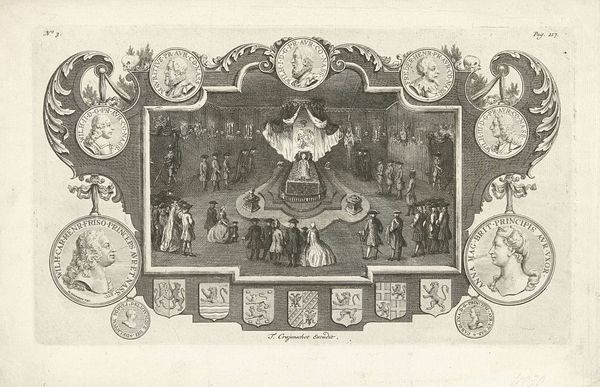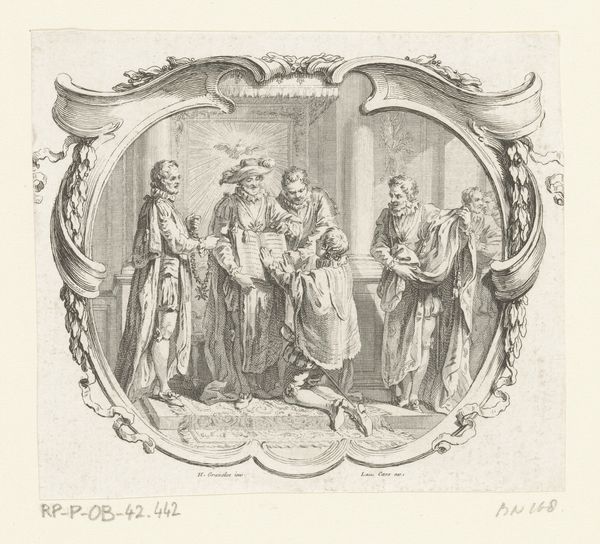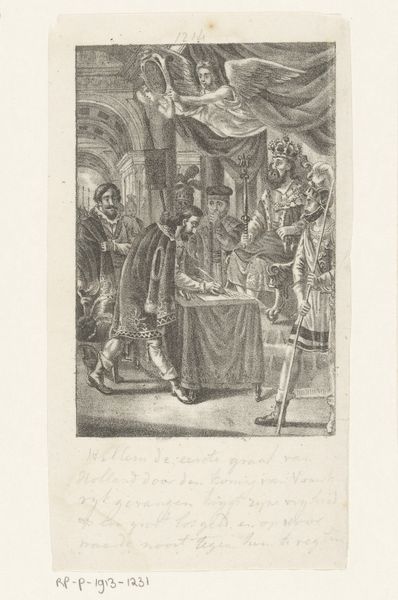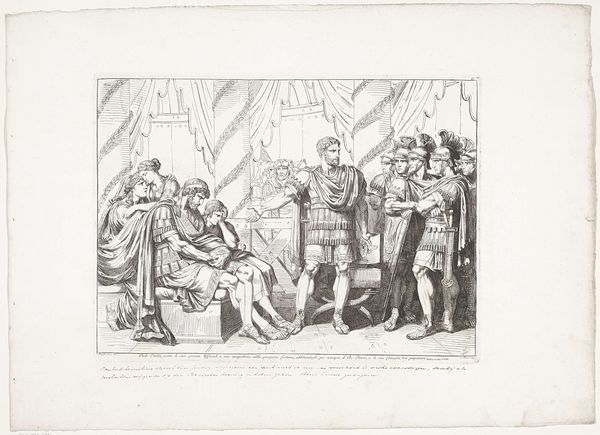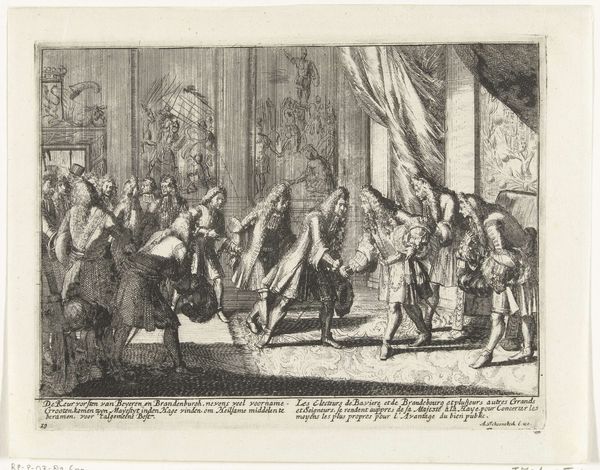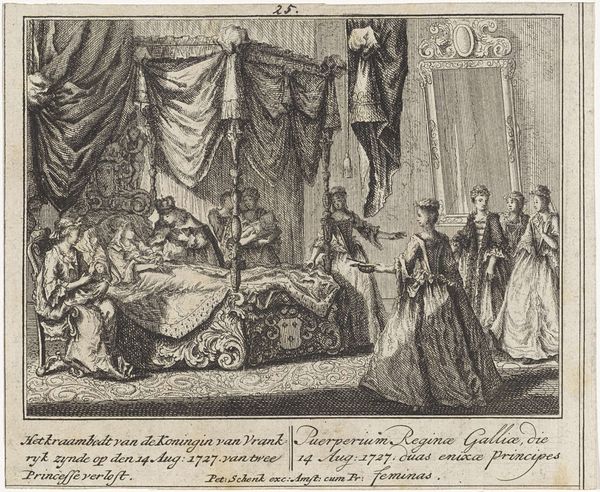
drawing, ink, pen
#
portrait
#
drawing
#
medieval
#
quirky sketch
#
mechanical pen drawing
#
pen sketch
#
pencil sketch
#
old engraving style
#
11_renaissance
#
personal sketchbook
#
ink
#
pen-ink sketch
#
pen work
#
sketchbook drawing
#
pen
#
history-painting
#
sketchbook art
Dimensions: height 211 mm, width 241 mm
Copyright: Rijks Museum: Open Domain
Jan Kobell's drawing captures Philip the Good, Duke of Burgundy, and his court. The heraldic shields displayed prominently symbolize lineage, power, and allegiance. The fleur-de-lis, a stylized lily, appears on the cloak of one of the figures. This motif, historically associated with French royalty, transcends its origins, appearing across Europe as a symbol of sovereignty. Consider its echo in religious art, where the lily represents purity and the Virgin Mary. Here we can see the symbol's meaning shifting from the sacred to the secular, embodying both divine right and earthly power. This transformation reflects a culture's evolving relationship with its rulers, and how such imagery engages viewers on a deeply subconscious level, evoking emotions of reverence or perhaps, rebellion. This symbol's cyclical journey reveals how imagery resurfaces, evolves, and is imbued with new meaning across time.
Comments
No comments
Be the first to comment and join the conversation on the ultimate creative platform.
